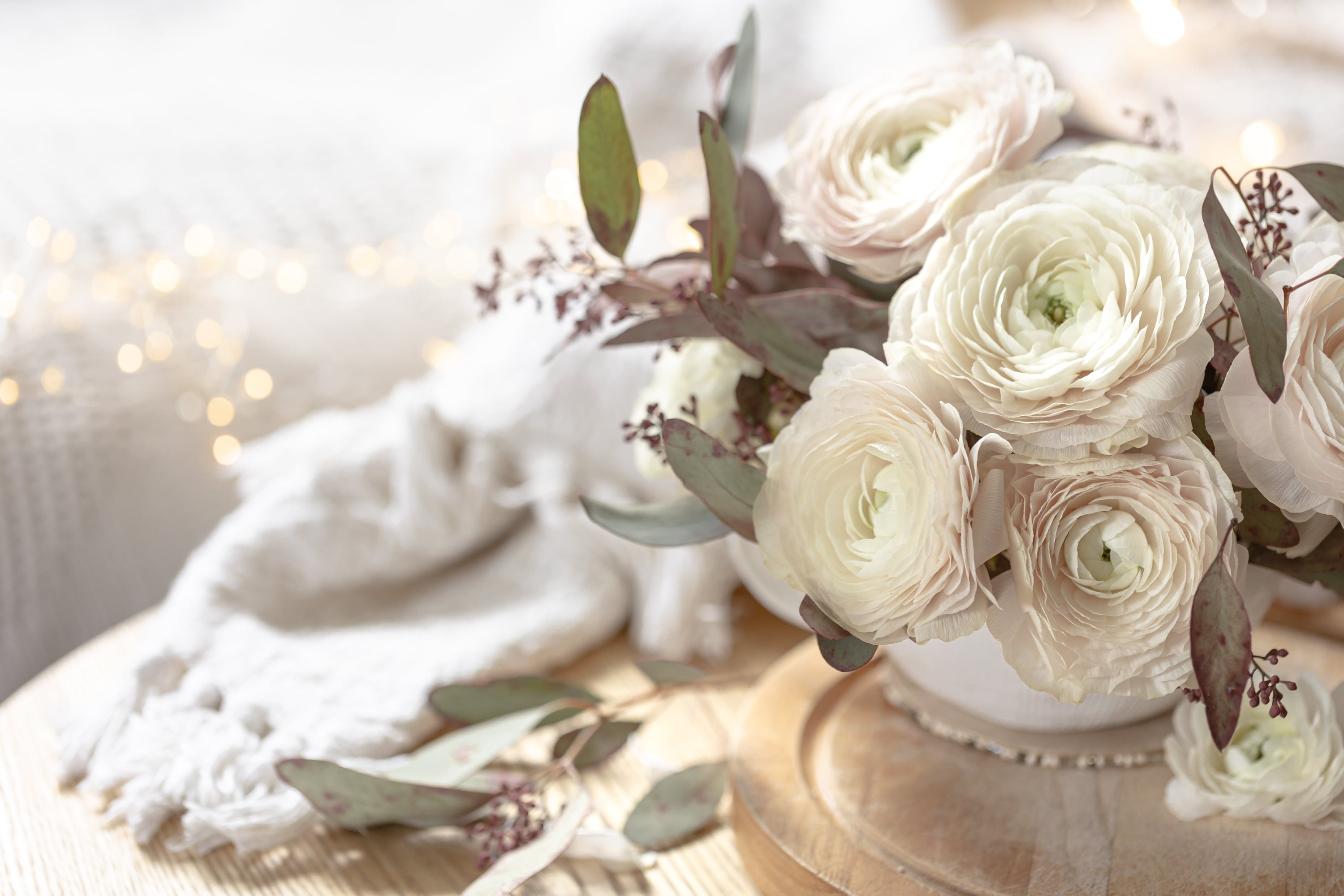Have you ever wondered how to bring vibrant splashes of colour to your garden with minimal effort?
Look no further than the ranunculus flower, a stunning plant known for its layers of delicate, crepe-paper-thin petals and a range of hues that captivate any garden enthusiast.
This guide will walk you through the basics of caring for ranunculus. We’ll look at how to grow them and the best practices for planting these radiant blooms.
Everything You Need to Know About Ranunculus
Ranunculus, also called buttercups, are known for their wide range of colours and lush look.
These flowers are a favorite for their beauty. They are also prized for their usefulness in gardens and bouquets.
Here's more on what makes the ranunculus flower so special:
-
Varieties and Colors. Ranunculus comes in shades ranging from crisp whites and soft pinks to vibrant reds and deep purples, allowing for a diverse palette in garden designs and bouquets.
-
Seasonal Flexibility. Although they bloom in spring, ranunculus flowers can be planted in many seasons. This makes them adaptable to different gardening schedules.
-
Longevity. With proper care, ranunculus plants can flower for a long time. The flowers often last several weeks, longer than many other garden flowers.
- Cut Flower Excellence. Ranunculus can last up to a week as cut flowers. Their petal-heavy blooms keep their beauty and shape, making them perfect for arrangements.
Planting Your Ranunculus Bulbs
When to plant ranunculus bulbs heavily depends on your climate. It's best to plant in cooler areas in early spring, but fall planting is ideal in warmer regions.
Here are some quick steps to get your bulbs in the ground:
-
Choose a sunny spot. Ranunculus love the sun and require good light to bloom profusely.
-
Prepare the soil. Ensure it is well-draining and add compost to enrich the soil.
- Plant the bulbs. Plant them about 2 inches deep with the claws pointing downwards.
Caring for Your Ranunculus
Once your ranunculus flower starts growing, caring for ranunculus is straightforward. Here are some tips to keep them flourishing:
-
Watering. Keep the soil moist but not waterlogged.
-
Feeding. Use a balanced, slow-release fertilizer to promote healthy growth.
- Deadheading. Remove spent blooms to encourage new flowers.
Common Challenges and Solutions
While generally hardy, ranunculus can encounter some issues:
-
Pest Problems. Aphids and fungal diseases can be a concern. Regular inspection and organic pesticides can help manage these issues.
- Overwatering. This can lead to root rot. Ensure good drainage in your planting beds.
Getting the Most Out of Your Flowers
For those who adore fresh bouquets, ranunculus flowers make perfect cuts.
They can last up to 7 days in a vase if you:
- Cut the stems at a 45-degree angle.
- Change the water regularly.
- Keep them away from direct sunlight in the vase.
Growing ranunculus flowers is rewarding. They brighten any garden or home with their spectacular blooms.
By following this guide on how to grow and care for ranunculus, you'll be well on your way to having these breathtaking buttercups thrive under your care.
Are you ready to transform your garden with these gorgeous blooms?
Visit Terra Plants and Flowers to explore our wide range of flower options.
